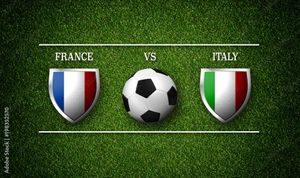Kamil Stoch, the two-time Olympic champion, is experiencing a challenging phase in his ski jumping career, grappling with injuries and fluctuated performances on the world stage. The Polish ski jumper, known for his extraordinary talent and achievements, has recently faced scrutiny and concern from fans and pundits alike as he navigates this tough patch.
Stoch's performance has raised eyebrows during the recent ski jumping events, particularly noted during competitions held throughout November 2014. Observers have pointed to specific jumps where he struggled to find his footing. An anonymous commenter remarked about his predicament, saying, "Nie chce swojej kompromitacji, pewnie źle mu idzie!" which translates to "He doesn’t want his compromise, surely he’s not doing well!" This statement captures the sentiment surrounding Stoch's recent jumps.
While there have been discussions about the weather affecting jump conditions, Stoch's own ability to bounce back has been unclear. He has faced injuries—common hazards of the sport—that have certainly impacted how he approaches each event. Notably, fellow competitor Dawid Kubacki has also been part of the scene, earning notable prize money but not without the trials of the season weighing down on all Polish jumpers.
The nuances of ski jumping, particularly this season, highlight how swiftly fortunes can change. Another anonymous commentator expressed, "Kamil w indywidualnych nie będzie tutaj wysoko - nie lubi tej skoczni - w Engelbergu dopiero 2 zwycięstwa i będzie prowadził w PŚ..." meaning, "Kamil will not be high here individually - he doesn’t like this hill - he only won 2 victories here and will lead the World Cup..." This sentiment reflects the complicated relationship between athletes and the venues they compete on.
The competitive edge within ski jumping makes it imperative for every athlete to perform at their peak, yet the psychological strain of injury cannot be understated. Stoch’s past triumphs, such as notable victories at Engelberg, seem distant when faced with current challenges. Fans are left hoping for his recovery, seeking the spark of brilliance he has displayed previously.
Financial incentives established by the International Ski Federation (FIS) create additional pressure for jumpers like Stoch. Prize money is awarded to the top 30 placements within individual events, with top competitors earning upwards of 10,000 Swiss francs for first place. Athletes’ earnings also stem from team wins, external endorsements, and national support, offering multifaceted motivations behind each leap.
The pressure to perform is immense, and with every jump, stakes rise not just for personal accolades but also financial gain. Competitors such as Piotr Żyła and Dawid Kubacki are all racing not only against each other but also against time and injuries to achieve their shared goal of placing Poland at the forefront of ski jumping.
The gravity of injuries and performance struggles can weigh heavily on athletes, and Stoch’s current experience resonates deeply with the challenges of many elite competitors facing similar circumstances. The ski jumping community eagerly awaits the return of Stoch to form, reflecting on the adage, “What goes up must come down.”
Skis and dynamic performances characterize ski jumping events, and with the highs of victory come the lows of injury and pressure. Stoch embodies this duality, and fans around the world are rallying for his resilience as he journeys through recovery and growth. The hopes placed on Stoch aren’t merely for his improvement but also for the reinvigoration of Poland’s prestige within the sport.



